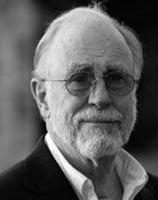IJMA3 USA
David Holdridge

David has 30 years of experience initiating and providing executive leadership in non-governmental, humanitarian organizations in various countries in the Middle East, Africa, Central and Eastern Europe, Asia and the United States. He served in Iraq as Mercy Corps' Chief of Party for the Community Action Program from September of 2003 to 2005. From 2005 to 2009, he was Regional Director for Mercy Corps' Middle East programs, responsible for the Palestinian Territories, Lebanon, Jordan, Iraq, and Syria. During those years, David and his team were among the few American civilians in Iraq to live outside the Green Zone. He managed hundreds of millions of dollars of development funds from various bilateral donors, including the US Agency for International Development, the U.S. State Department, the European Union, the UK's DFID, and a range of foundations and private donors. Prior to his term with Mercy Corps, David held a series of leadership positions with Catholic Relief Services and the Vietnam Veterans for America Foundation. David served in Vietnam in 1969 as a Platoon leader.
Since his return to the United States in 2009, David regularly speaks to federal officials, business leaders, community groups, and development practitioners on American engagement with Iraq and the greater Middle East, and has received particular renown for his first-hand knowledge of how foreign assistance has impacted local civilians. As President of Bridging the Divide, he has dedicated himself to the system-level reform of American foreign assistance, leading the development of a new model of “citizen-owned” foreign assistance that uses communications technology to cut wasteful spending, increase local ownership, and enhance public awareness of global issues. David also provides consulting services to business leaders on corporate social responsibility in the Middle East. He has been featured on national television news outlets and print publications for his work, most notably CNN, POLITICO, Charlie Rose, The New York Times, The Wall Street Journal, The Christian Science Monitor, and the Stanford Social Innovation Review.